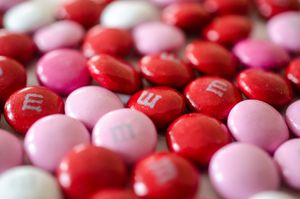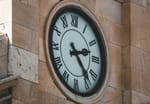Following the ebbs and flows of a prospect's draft season hype levels is always a fascinating thing. I've found that, outside of the very cream of the crop who are just excellent from start to finish, being someone who had high expectations going into their draft is more of a curse than a blessing. Even for some players who were thought to be top prospects going into their draft year, nothing will kill your rankings more than having something better expected from you.
Just ask Aatu Raty and Brad Lambert.
One thing I've thought since the moment I started doing prospect research and writing, is that a guy who has some hype going into their draft year did for a reason. Sometimes, their rankings fall off for a good reason too – maybe they showed no real growth, maybe the hype going into the season was always overrating them, maybe the hype was all based on the points they were generating before they ever got to a major junior or professional league.
But that isn't the case all the time. Sometimes, having a poor draft season relative to expectations happens for reasons beyond that prospect's control. Maybe they were injured, or playing through an injury. Maybe they got stuck on a terrible team with no supporting cast, and while they weren't a true elite prospect capable of winning games entirely for their team there's still a good prospect there that just can't be seen as easily. Or maybe they get stuck with a coaching staff and system that neuters their strengths, rather than working with them. Sometimes, top prospects don't actually forget how to play high level hockey, if they showed true signs of high level play before.
If I want to make a direct comparison to Caden Price, I would talk about the likes of Tristan Luneau or Justin Barron. Both were top defensemen prospects going into their draft years who underwhelmed, and saw their draft rankings slip and slip and fall even further on draft day. Barron only fell to 25th, so still in the first round. And while he may not be a superstar defensemen in the NHL, he did put up 15 points in 39 games for Montreal as a 21 year old last season. Tristan Luneau fell all the way to 53rd overall in 2022, and this season was named best defenseman in the QMJHL after exploding for 83 points in 64 games for Gatineau – and adding 17 points in 13 games in the playoffs.
Prospects this young rarely develop in a straight line with a constant upwards trajectory. There are peaks and valleys, for all the kinds of reasons I touched on above. And this year, I think one example for a good bounce back candidate is Caden Price.
THE BASICS: STATS AND CONTEXT
- Position: Left-shot defenseman
- League(s): WHL
- Height: 6'1"
- Weight: 190 lbs
- Birthdate: August 24th, 2005
Here are his draft rankings, as of writing this:
- Bob McKenzie: 38th
- Scott Wheeler: 46th
- Elite Prospects: 37th
- Dobber Prospects: 27th
- Smaht Scouting: 50th
- Future Considerations: 41st

Caden Price started this draft year hot as all hell. He played for Caden at the Hlinka Gretzky tournament where he was in the conversation for best defensemen of the tournament. He was genuinely in conversations for being a top defenseman in this draft, maybe a top 5 and certainly a top 10 candidate.
Price then joined a young and rebuilding Kelowna Rockets team in the WHL, where the hope or expectation was he and fellow top prospect Andrew Cristall would turn them into a threat against the better known contenders. That didn't really happen, though they did make the playoffs. In the WHL, Price had 5 goals and 40 points in 65 games for Kelowna this season playing in all situations: their top pair at even strength, their top powerplay unit, and on the penalty kill. He had the 3rd most points in the WHL for this draft year, just ahead of Tanner Molendyk, but just over half of his points came on the powerplay.
Being eliminated so early did from the WHL playoffs did make Price eligible to join Team Canada for the World U18 championships in April/May, where he had a chance to use the international stage to show his stuff once again and reclaim some of the hype he earned at the Hlinka. He was good, earning 5 points in 7 games while not being given as large a role as at the Hlinka. But he wasn't as spectacular with the opportunities he was given.
So what happened? How did a guy who was in the conversation for a potential top 5 pick at the start of the year almost universally fall outside of the first round?
Some of it may start with the coaching he had in Kelowna. I am no expert on this sort of thing with the Leafs and I watched them a heck of a lot more than I watched Kelowna this year. But I've seen some scouts mention that where the strength of his game comes from his creativity as well as his activations in transitions and in the offensive zone, he wasn't given much freedom to do all of that on Kelowna. Nor was he given as much of an opportunity to do it at the World U18s as he was at the Hlinka.
Let's dig into his strengths and weaknesses from the games of his that I saw and see if we can get a clearer picture of what went wrong.
THE GOOD: TWO-WAY POTENTIAL
What's that? Brian is profiling a defenseman that he says has two-way potential? Better stop the drinking game that would justifiably come from this year's profiles because I don't want anyone's alcohol poisoning on my conscious.
But it's true. The biggest value of Price comes from his ability to have an impact everywhere on the ice and in all situations. In isolation, he may not be the very best offensive, or the very best defensively. But he has shown flashes of being solid in both, enough that even now, at the lowest point in his hype, he still looks like he has middle pairing upside.
Price is especially strong on transitions, using his very strong mobility as a skater and creativity with the puck to get the puck up the ice effectively and efficiently. He shows this ability the most on retrieving dump ins or other loose pucks in his own end, and finding enough time and space to exit the defensive zone with control – usually by evading forecheckers and finding the right outlet pass. He's one of the better stretch passers among defensemen I watched this year.
Offensively and defensively, Price this year seemed to be good. Not excellent or elite, just "good" as Randy might say. He has a high level of creativity in the offensive zone when it comes to finding passing lanes from the point. But his decision making when it comes to shooting or making other plays is relatively lacking – and we'll talk about that below.
You can see the strengths of his evasion and passing in this highlight pack – Price wears #4 in all of the clips.
You can see in these clips that Price can make some pretty daring and high risk passes, even in his own zone. He does play a bit of a high risk, high reward kind of game with the puck on his stick. It's a bit Jake Gardiner-like in that in works most of the time, and the impact of making those risky but high reward plays is pretty significant. But the impact of the mistakes can be significant as well, and that's another thing we'll talk more about below.
Defensively it's a bit of the same. Price is overall a good skater and does carry over some of that risk-reward style defending transitions or in his own zone, but he is also generally more passive than he is offensively. This might be an area in particular where it is what is asked of him by his coaches, because he did seem to play differently (and better) while with Team Canada.
Price has shown the ability to be a highly effective transition defender, and do a good job managing gaps. Earlier in the season he had strong reviews and tracking data in that regard. That did fade through the season – not to the point it completely disappeared, it just went from elite to merely very good. In his own zone it was always less effective and consistent overall, but again still at a good level.
At this point it's hard to talk about his strengths or potential without talking about his flaws, so let's get to that.
THE FLAWS: MOBILITY & DECISION MAKING
So, what happened with Price? I'm not at a level of scouting where I think I can really diagnose it. I can tell that later in the year, he did not look as good as he did at the start. Whether that's coaching, a nagging injury, teams learning how to exploit his weaknesses, or some mix of those and other elements – the fact is he really faded through the season. But I can share what I've seen other scouts say, and the two themes that come through are concerns with his mobility and the consistency of his decision making.
For Price's mobility concerns, it seems to be an issue with his foot speed. While he is overall a pretty good skater, at least, he can get into trouble against fast or agile players. The problem is he is not able to match the raw speed or quick, horizontal cuts. What's still confusing to me is that earlier in the season, that didn't seem to be as much of a problem. His tracking data and scouting reports all pointed to him being a very capable at defending against the rush when he was still dealing with the same competition. So what happened?
Part of it may come down to the second issue, his decision making. I've seen many a scout talk about how Price was truly baffling them as a prospect – he could have enormous highs where he looked like a top defenseman in the draft, and then go through extreme lows where he looked invisible or downright bad. And this was most often talked about in terms of the actions he took on the ice.
From reading all of these reports and what I watched of Price, I have a theory. I talked above about how Price has a bit of that Jake Gardiner high risk, high reward element to his game. So I think a combination of two things happened. First, that earlier in the season that risk-reward style jsut so happened to generate a lot more reward than was sustainable. He just so happened to roll a lot of fives and sixes on the dice. I think this may have also been helped by teams and players being a bit more rusty earlier in a season, before they're locked into playing their systems and tighter defense or better offensive executions.
The second part is that when the risk-reward started balancing out more, I think his coaches may have tried to rein him in more and play safer. Which for a player of that style, could have just made things worse. He may have also started losing some confidence to try the same things, or try them as often. That may be what really started to affect things like his decision making and his foot speed-based mobility. Maybe he got in his own head, and stopped making more assertive and effective decisions. Delaying his reactions as he was still mentally calculating what the best thing to do was because he was questioning himself.
That's just my theory based on those two more clear issues that were identified. I just question whether the two things are a problem, or a symptom of a different problem.
OVERALL ASSESSMENT
So, here's the big question: are the issues that emerged with Price through the season something that are more symptomatic and/or something that can be fixed? Or are they inherent issues that do indicate he shouldn't be considered as a valuable defensive prospect? Is he another Barron or Luneau, or is he just one of numerous other prospects who look like hot shit one moment but have very real flaws that create a bigger issue for their future projection? Was his season just a case of the ebbs and flows of a prospect's development path?
Here's what the answer is to me – I think there is certainly some risk to his game. Even if he played at a higher level more consistently, there are some concerns about his skating and decision making. But I also think there are some signs that the concerns are perhaps overblown. The nature of his decline over the season does not suggest to me that he suddenly just became a worse player. I think there are issues that can be fixed, especially if he's drafted by the right team that can work on improving those problems in the right way.
So while I would not take him with a first round pick, I would take him if Toronto traded down from 28 and he was still available with another pick. After seeing more scouting outlets' final rankings come out, he's being lowered more and more. I would not be surprised if, on Bob McKenzie's final rankings, Price was as a later second round pick or lower. And with a prospect facing a drop like that, it's not uncommon for them to drop even further than that on draft day as teams are more wary of the risk.
Depending on who else is available at the time, taking him with their second pick (assuming they traded down) could be a worthy gamble that he finds his confidence and his form again, and his developmental arc starts rising again. Even getting a middle pair defenseman with a second or third round pick is a success, after all.
Thanks for reading!
I put a lot of work into my prospect articles here, both for the draft and Toronto's prospects. I do it as a fun hobby for me, and I'd probably do it in some capacity even if PPP completely ceased to exist. But if you like reading my work, some support would go a long way! I pay for a few streaming services (CHL, some NCAA, some USHL, the occasional TSN options for international tournaments that are broadcast) to be able to reliably watch these prospects in good quality streams. I also pay for some prospect-specific resources, such as tracking data and scouting reports from outlets like Elite Prospects, Future Considerations, McKeen's Hockey, and The Athletic.
Being able to get paid for this helps me dedicate more time and resources to it, rather than to second/third jobs. And whatever money I make here, a lot of I reinvest back into my prospect work through in those streaming and scouting services. Like I said, I'd be doing whatever I can afford for this anyway, so any financial help I get through this is greatly appreciated!






